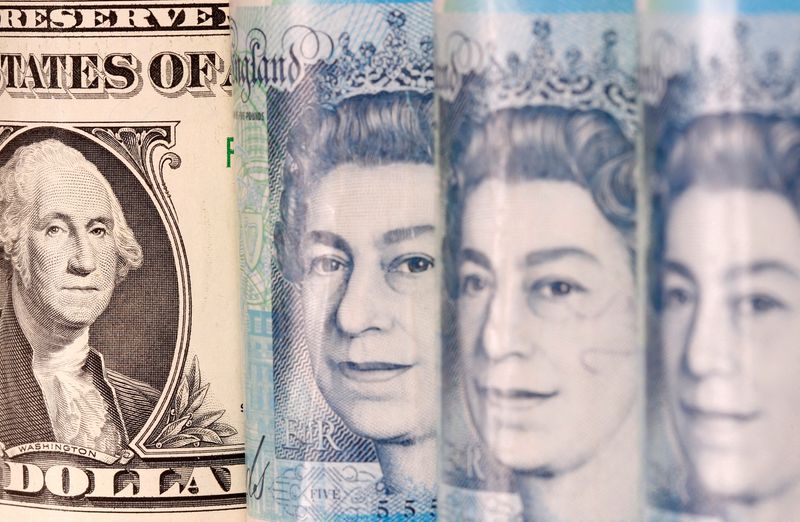By Samuel Indyk
LONDON (Reuters) – The British pound continued its recent decline against the dollar and euro on Monday, driven by investor concerns about the sustainability of Britain’s budget, while government bond yields rose for a sixth straight day.
Sterling fell as much as 0.7% against the dollar to $1.21, its lowest level since November 2023. It was last at $1.2124.
Against the euro, the pound fell 0.3% to 84.13 pence.
The pound was in the crosshairs of global currency traders as British markets were hit by rising bond yields, a move that originated in the United States amid concerns about rising inflation and lower chances of Federal Reserve rate cuts.
Strong US labor market data released on Friday boosted the upward trend in global bond yields, with money markets no longer fully pricing in a Fed rate cut this year.
While higher interest rates tend to support the currency, analysts in Britain expect higher borrowing costs could force the government to rein in spending or raise taxes to meet fiscal rules, potentially putting pressure on future growth .
“It’s clear that something is coming to a head and it’s not because of anything Britain has done in the last two weeks, but because of the sensitivity of British budget dynamics to interest rates and inflation,” said Dominic Bunning, head of the G10 FX Strategy at Nomura.
“The question for me is, if rates start to stabilize, is that enough of a reprieve for this sell-off to start to slow or catch its breath?”
British ten-year government bond yields rose 1.5 basis points to 4.855% on Monday, just below last week’s high of 4.925%, the highest level since 2008. Last week yields rose more than 24 basis points, the biggest weekly rise in a year. Bond yields move in the opposite direction to prices.
The British 30-year yield rose to a 27-year high on Monday, to 5.472%.
British Prime Minister Keir Starmer said on Monday that the government will stick to the fiscal rules set out in Chancellor of the Exchequer Rachel Reeves’ October budget and that he has full confidence in it. There was little immediate market reaction to his comments.
Reeves gave herself only a small margin of error in meeting her goal of balancing government spending with tax revenues by the end of the decade.
The recent rise in borrowing costs and sluggish UK growth rates in the second half of 2024 make achieving that target increasingly difficult.
This week, attention would also likely turn to Wednesday’s British inflation figures.
Consumer prices are expected to have risen 2.6% annually in December, in line with November, but the core CPI is expected to have fallen from 3.5% to 3.4%.
“The release of the UK December CPI data this week will be crucial in recalibrating expectations around the risk of a rate cut next month,” said Jane Foley, senior currency strategist at Rabobank.

“Elevated expectations of a BoE rate cut in February would likely bring the 1.20 level into view.”
Futures markets have priced in an easing of around 16 basis points at the BoE meeting in February, implying around a 65% chance of a quarter-point rate cut.


